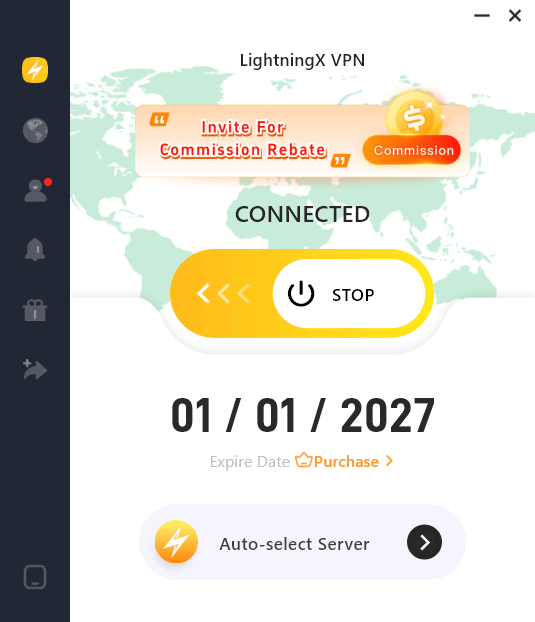The Internet Protocol Suite, commonly known as TCP/IP, constitutes the fundamental architectural framework governing all digital communications across the global network.
This analysis will delve into the mechanisms of TCP/IP, detailing its layered model, the distinct responsibilities of TCP and IP, and its role as the de facto standard codified in RFC documentation.
What Is TCP/IP?
TCP/IP stands for Transmission Control Protocol/Internet Protocol. They both belong to the network protocols.
TCP/IP is not a single protocol but a family of protocols, named after its two most critical components:
Internet Protocol (IP)
IP operates at the Network Layer and is fundamentally responsible for logical addressing and routing.
Its primary function is to provide the mechanism for data packets (known at this layer as datagrams) to traverse from a source host across one or more intermediate routers to a destination host.
IP provides a best-effort, connectionless delivery service, meaning it does not guarantee that packets will arrive, arrive in order, or avoid duplication.
Transmission Control Protocol (TCP)
TCP operates at the Transport Layer and builds upon the unreliable service of IP. TCP is a connection-oriented protocol that establishes and manages a stable, reliable data flow between two application endpoints. It achieves reliability through sophisticated mechanisms:
- Segmentation: TCP breaks application data into segments.
- Sequence Numbering: It assigns sequence numbers to segments to ensure in-order delivery.
- Acknowledgement (ACK): It uses an acknowledgement system for error detection and retransmission of lost segments, guaranteeing that the complete message is reassembled correctly at the destination.
In essence, IP provides the addressing (where to go), and TCP provides the reliable, ordered delivery service (how to get there reliably).
The TCP/IP Protocol Suite: A Four-Layered Architecture
The TCP/IP model logically segments the communication process into four distinct layers – a modular framework where each layer relies on the services of the layer below it.
1. Application Layer
This is the topmost layer, where user interaction and network services originate. It handles the specific application needs and formatting, managing processes like data encoding and dialogue control. Key protocols include HTTP, DNS, SMTP, and FTP.
2. Transport Layer
This layer provides end-to-end communication services for applications. It is responsible for segmentation, connection management, multiplexing, and flow control. The primary protocols are TCP (providing reliable, connection-oriented service) and UDP (providing fast, connectionless service).
3. Internet Layer
The core of the model, this layer is responsible for logical addressing (IP addressing) and routing of datagrams across interconnected networks. It determines the best path (routing) for data packets and handles the encapsulation of transport-layer segments. Its primary protocol is IP.
4. Network Interface Layer
This bottom layer deals with the physical transmission of data over a specific link technology (e.g., Ethernet, Wi-Fi). It defines the physical medium, timing, and includes protocols for physical addressing (MAC addresses) and the framing of data into frames for local network transmission.
Each layer plays a specific role, making sure data flows from one place to another smoothly and securely.
How TCP/IP Works: A Step-by-Step Guide
Now, let’s look at what actually happens when you do something online, like loading a website. Here’s a simplified version of the journey:
- Starting the request: When you type a URL into your browser, the request moves from the application layer down through the other layers. It gets wrapped in layers of “instructions” so it can travel across networks.
- Packet creation: TCP chops your data into packets. Each packet is like a small envelope that contains part of your request and instructions on how to reassemble the data on the other side.
- Addressing with IP: IP attaches the destination address to each packet, like a postal address. This address ensures the packet arrives at the correct location.
- Routing through networks: The packets hop from one router to another, each router acting as a checkpoint. If one path is busy or down, IP finds another route, ensuring efficient delivery.
- Reassembly at destination: When the packets reach the other end, TCP checks that each one is there and in the right order. It then reassembles them, presenting the complete data to the application layer so the website loads in your browser.
- Receiving a response: This whole process happens again in reverse when the server responds to your request, delivering the web page content back to your device.
Operational Relevance of the TCP/IP Model
A detailed understanding of the TCP/IP model transcends theoretical knowledge; it provides the diagnostic framework essential for network professionals, developers, and security analysts. This knowledge is directly applicable in two critical areas:
1. Network Diagnostics and Troubleshooting
By recognizing the specific responsibilities of each layer, one can efficiently isolate the source of network impairments:
- Transport Layer insight is crucial for diagnosing issues like high packet loss and excessive retransmission timers (TCP), which manifest as significant application latency or intermittent connectivity failures.
- Internet Layer knowledge allows for the interpretation of the tools traceroute to identify routing loops, suboptimal path selection, or fragmentation issues that hinder global data flow.
- Link Layer analysis helps pinpoint problems related to physical layer errors, duplex mismatches, or MAC address collisions on the local network segment.
2. Cybersecurity and Threat Mitigation
The layered architecture of TCP/IP reveals how vulnerabilities are distributed across the stack, guiding effective security strategies:
- Application Layer is targeted by content-based attacks, including DDoS (Distributed Denial of Service) attacks and code vulnerabilities (e.g., SQL injection).
- Transport Layer Security focuses on protecting session establishment, mitigating attacks like SYN flooding that aim to exhaust server connection resources.
- Internet Layer risks center on IP spoofing – deceptive source addressing used for illicit activities, and manipulation of routing protocols.
A solid grasp of the TCP/IP model is thus the foundation for effective network defense and risk assessment.
Why Use a VPN with TCP/IP?
Using a Virtual Private Network (VPN) becomes especially critical when accessing the internet via public Wi-Fi networks (such as those in cafés or airports), where data is easily susceptible to packet sniffing or man-in-the-middle (MITM) attacks. In these environments, an attacker can directly intercept and read unencrypted data flowing across the network.
A VPN adds a crucial layer of security to the fundamental TCP/IP communication process.
How a VPN Interacts with the TCP/IP Stack
A VPN does not change the underlying TCP/IP mechanism for addressing, routing, and reliable data delivery. Instead, it operates by establishing a secure, encrypted tunnel between your device and a VPN server before your traffic enters the public network.
This process involves two key steps that directly affect the data being processed by TCP/IP:
- Encryption and Encapsulation: Your application data (the original payload) is first encrypted using strong standards (like AES-256). This encrypted data is then encapsulated within a new, outer VPN data packet.
- IP Address Masking (Source Address Spoofing): The new, outer packet is tagged with the VPN server’s IP address as its source, effectively masking your device’s true public IP address.
The standard TCP/IP process then routes this new, encrypted packet from your device to the VPN server. Because the data is already encrypted before it is processed by the lower TCP/IP layers on your local network, any interception attempt only yields unreadable ciphertext.
In essence, a VPN leverages the efficient routing provided by IP while ensuring the reliability and order of data flow provided by TCP, all while adding a layer of confidentiality that the core protocols do not inherently guarantee. Quality VPN services (like LightningX VPN) often include additional features, such as a kill switch, to prevent accidental data leaks if the secure tunnel fails.

Future of TCP/IP: Can It Keep Up with Today’s Internet?
TCP/IP has been around since the 1970s, and while it’s still incredibly effective, the internet has changed drastically. Today, we’re dealing with faster speeds, higher data volumes, and new technologies like the Internet of Things (IoT). TCP/IP continues to adapt, but there are newer protocols and models emerging, designed to handle the Internet’s growing demands.
For example, QUIC (Quick UDP Internet Connections) is a new protocol developed by Google that aims to be faster and more efficient than traditional TCP. It’s still early days, but QUIC could eventually work alongside or even replace parts of TCP/IP in specific scenarios.
Conclusion: The Backbone of the Internet
So, what is TCP/IP? It’s the language, the system, and the architecture that make Internet communication possible. While most of us will never need to understand TCP/IP in great technical detail, a basic understanding of it makes us more informed and tech-savvy internet users.
The next time you open your browser or video call a friend, you’ll know there’s a powerful, complex system working quietly in the background, bringing the internet to life.


















